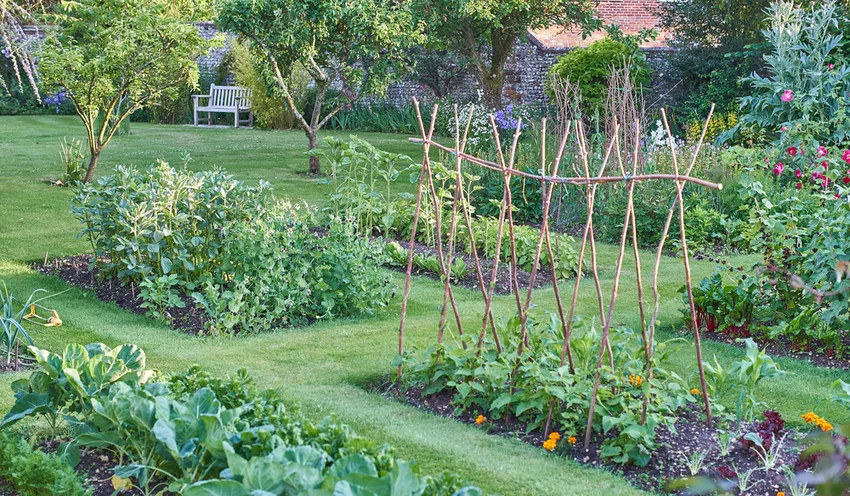Vegetables grown in your own garden not only offer savings on regular vegetable purchases, they are also a special treat in terms of taste. Directly from the bed to the table, it is far superior to that from the supermarket in terms of mineral and vitamin content. A carefully planned plant and a cultivation planner are the prerequisites for joy in cultivation and a rich harvest.
 Crop rotation is important when growing vegetables
Crop rotation is important when growing vegetables
The right location
Only a few types of vegetables thrive in a partially shaded or shady place. When planting, you should therefore choose a bright, sunny place that gets five to six hours of sun a day.
The soil texture
Good soil is the guarantee for high crop yields. The substrate must:
- easygoing and humorous
- nutritious
- water permeable
- and not too heavy or loamy
being. You can improve heavy soils with some sand incorporated. Mature compost also improves soil quality.
The bed plan
Once the right place has been found, the vegetable patch is laid out. For this you should draw a precise plan that contains all the details.
The individual beds should not be planned wider than 1.30 meters so that you can easily reach the plants placed in the middle from both sides.
Draw walkable paths between the beds that serve as divisions. These should have a stable surface, as wheelbarrows can be pushed better that way. A self-made border made of wood or stone also makes sense so that the lawn does not grow uncontrollably into the vegetable patch.
How is it planted?
A planner helps here too, because if you plant the vegetable plants carelessly, the harvest will often not be successful. There are a few things to consider here.
Various vegetable crops
The types of vegetables are divided into pre-, main and post-cultures. In this way, the available space can be optimally used.
The crop rotation
Vegetable plants have different nutritional needs. So that the soil is not leached, you should observe the crop rotation and never plant heavy feeders in the same bed the next year.
heavy feeder
These include, for example:
- Kohlrabi
- cauliflower
- leek
- sweet potatoes
- tomatoes
medium eater
Plant these in the second year in the bed in which the heavy feeders were grown the previous year. These include:
- lettuce
- carrots
- spinach
- Beetroot
weak feeder
Vegetable plants with very low nutrient requirements follow in the third year. This allows the soil to recover naturally.
These are for example:
- peas
- beans
- radish
- beets
- herbs
plan mixed culture
Undoubtedly, it is easier to neatly grow a single type of vegetable in each bed. However, plants grow significantly better if you give them the right neighbors. So that the mixed culture does not get out of hand, you should also take this point into account in your planner.
For example, the smell of the carrots keeps the dreaded onion fly away. Mite-prone vegetables benefit from the garlic planted right next door. These are just a few examples of good and bad neighbors. You can find many more in our articles on the corresponding vegetable plants.
tips
Even if you only have a balcony, you don't have to do without home-grown vegetables. Placed in conventional planters and with a well thought-out planting plan, you can easily supplement the family's menu with vitamin-rich balcony vegetables.